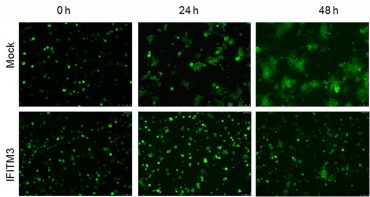Sept. 24, 2015

Proteins limit HIV-1 infection
Cells that expressed IFITM proteins (bottom row), showed much less spread of HIV-1 compared with cells lacking the protein. | courtesy Jordan Wilkins, Liu Lab By Jennifer Lu | MU Bond Life Sciences Center For Shan-Lu Liu, thinking outside the box meant putting an antiviral protein inside HIV-infected cells, rather than into healthy ones. Liu and…